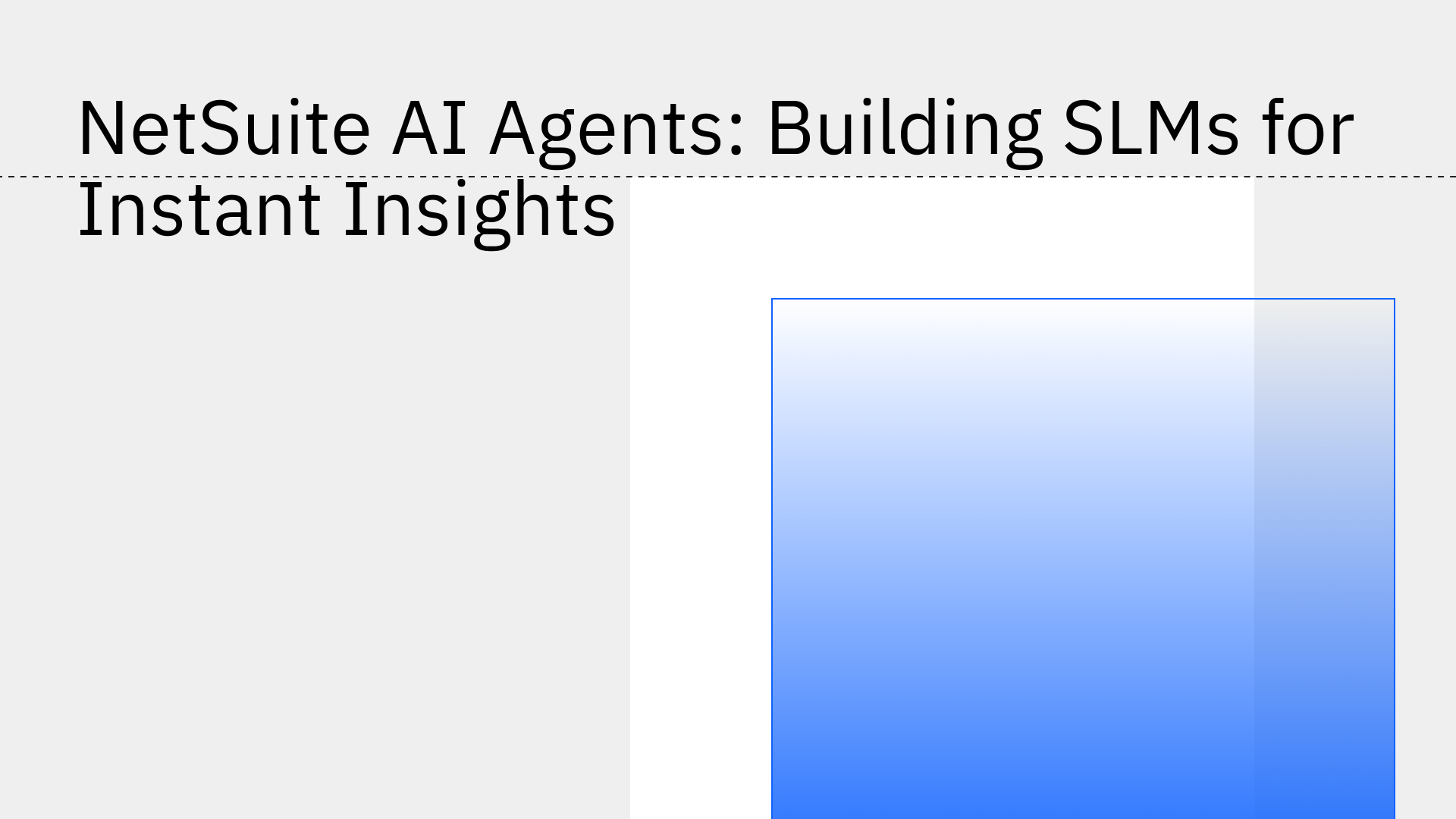
As of November 2025, the push for AI integration within NetSuite is accelerating. While large language models (LLMs) like those from OpenAI and Cohere have demonstrated impressive general-purpose capabilities, their use in high-throughput operational systems reveals significant technical and financial inefficiencies. The high latency and operational costs associated with LLMs are often prohibitive for the real-time, structured tasks that define most enterprise workflows. A growing number of C-suite executives—88% according to recent data—are prioritizing AI, but they need solutions that are both powerful and operationally viable [1].
This has led to a strategic shift towards Small Language Models (SLMs). These lean, specialized models are designed for efficiency, offering a clear path to building performant and cost-effective NetSuite AI agents for generating instant insights. However, the primary obstacle isn't the model itself—it's the data pipeline required to power it.
Unlike their larger counterparts, which are trained on vast, generalized datasets, SLMs are focused. They typically have fewer than 10 billion parameters, which provides distinct technical advantages for enterprise use cases.
For NetSuite, these models are an ideal fit for high-frequency, structured tasks that form the backbone of ERP operations.
An SLM is only as effective as the data it's trained on and fed for inference. For NetSuite AI agents to function, they need a continuous stream of high-quality, real-time data. This presents a significant data engineering challenge. Traditional methods like custom code, periodic CSV exports, or generic iPaaS tools are inadequate; they are brittle, introduce latency, and cannot handle the scale or complexity of real-time enterprise data.
To effectively build, train, and run an SLM for NetSuite, you need a data integration platform purpose-built for real-time, operational workloads. This is where Stacksync provides the critical infrastructure. Stacksync is engineered to eliminate the complexities of ERP data movement, offering a robust foundation for AI applications. Unlike legacy tools, Stacksync is revolutionizing NetSuite data integration by providing a true real-time, bidirectional sync that is both scalable and reliable.
Creating a production-ready SLM-powered agent for NetSuite moves from a complex research project to a manageable engineering task when the right data infrastructure is in place.
Here is a practical, data-driven approach using Stacksync:
This entire process completes in under a second, providing your finance team with instant insights and automation without disrupting their workflow. NetSuite's recent push toward agentic workflows and AI-driven updates makes this integration pattern more relevant than ever [2].
The conversation around AI often centers on model selection. However, for engineers and technical leaders, the core challenge is operationalizing these models reliably and at scale. SLMs present a powerful opportunity to build efficient and secure NetSuite AI agents, but their potential is unlocked by the quality and speed of the underlying data integration.
Stacksync provides the purpose-built infrastructure to solve this data problem. Our platform's guaranteed data consistency, automated error handling, and ability to scale to millions of records ensure that your AI agents are built on a solid foundation. By leveraging our NetSuite two-way sync integration, you can move beyond theoretical discussions and start deploying AI-powered solutions that deliver tangible business value.
Ready to power your NetSuite AI initiatives with real-time data? Book a demo with a Stacksync engineer today.